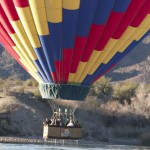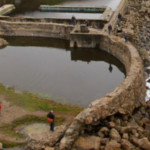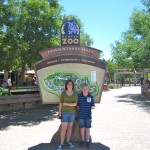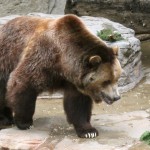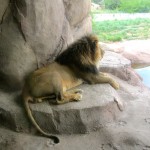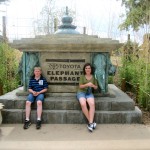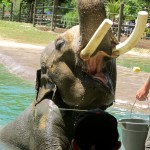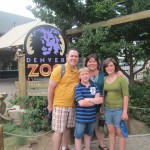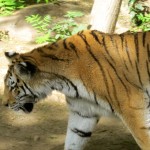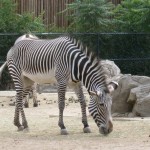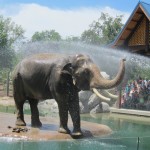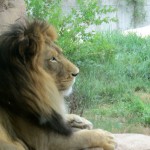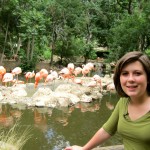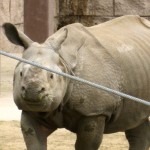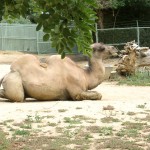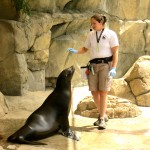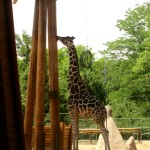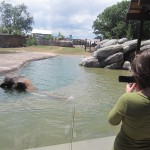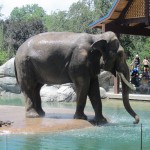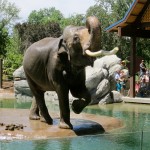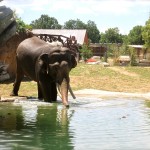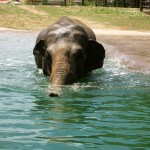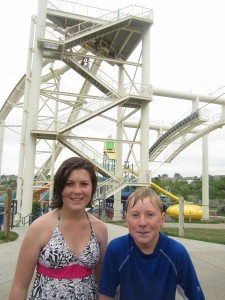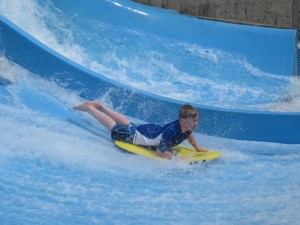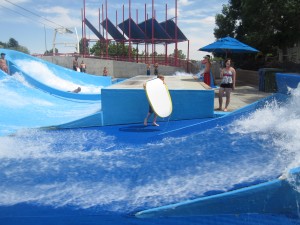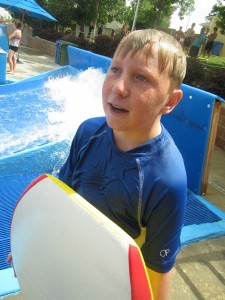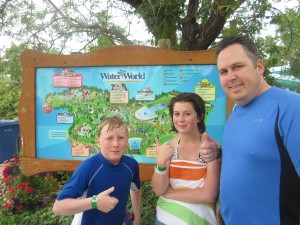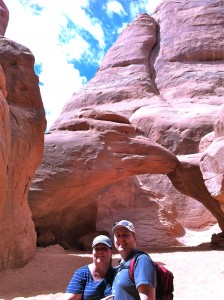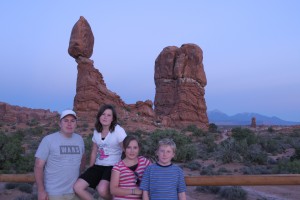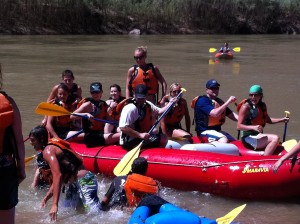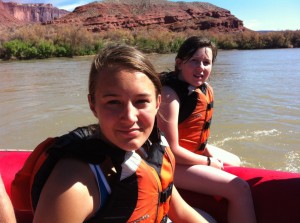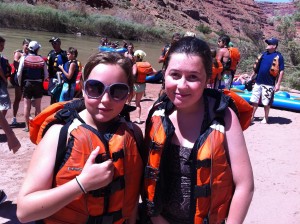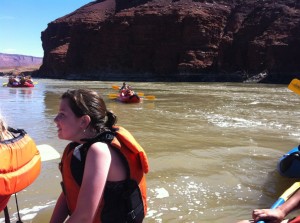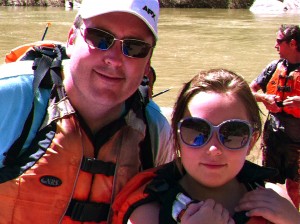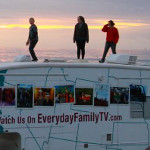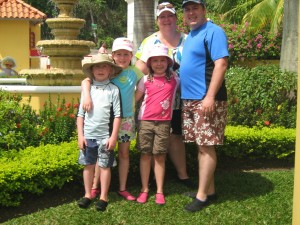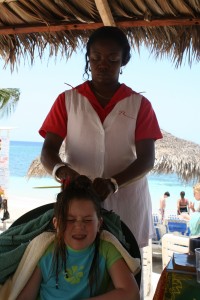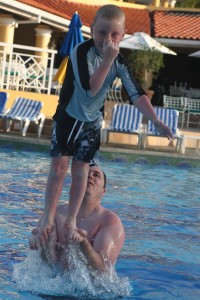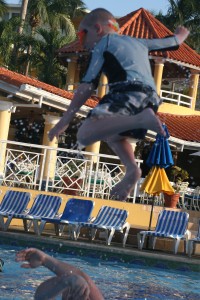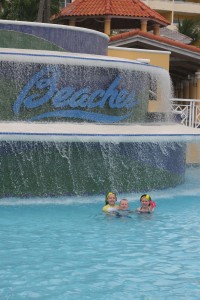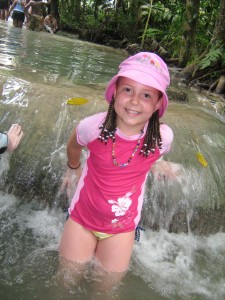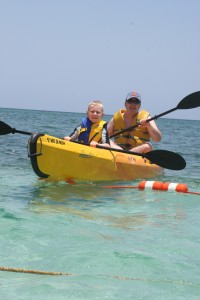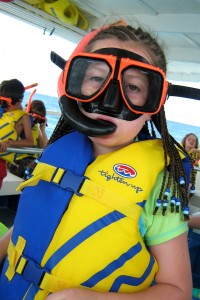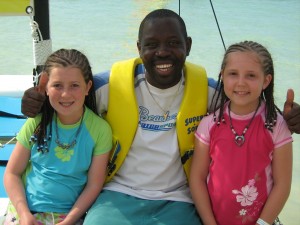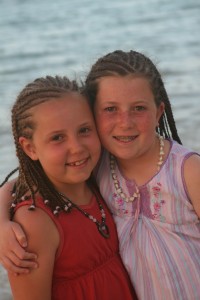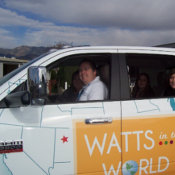Our Hot Air Balloon Flight with Bruce Sidlinger
While visiting the Lake Havasu Balloon Fest in Arizona, Avery and Shannon got a chance to go up in a hot air balloon with pilot, Bruce Sidlinger.
As you’ll see in the video, the wind immediately swept them over the lake towards the California border. A boat came over to tow them back to the Arizona side.
They flew over the marina to the London Bridge, intermingling with dozens of balloons before landing in the middle of a baseball field.
This was a 2 hour journey we won’t soon forget!
(video courtesy of Bruce Sidlinger)
Our visit to the enchanting Hearst Castle
14 Fascinating Facts about Hearst Castle
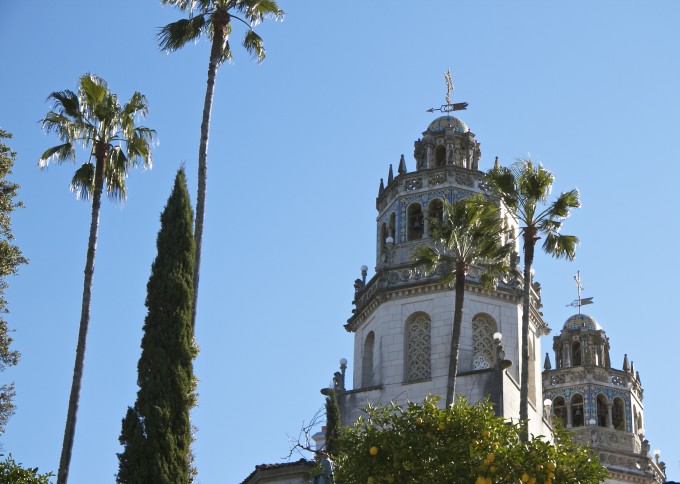
I have a confession. I was born and raised in California, and I’d never visited the iconic Hearst Castle before I moved away 6 years ago. Since our travels are taking us down the Pacific Coast Highway, I was determined to stop in San Simeon and visit the legendary home of the extravagant media mogul, William Hurst. What I didn’t realize is how fascinating of a story his life, and his home would be.
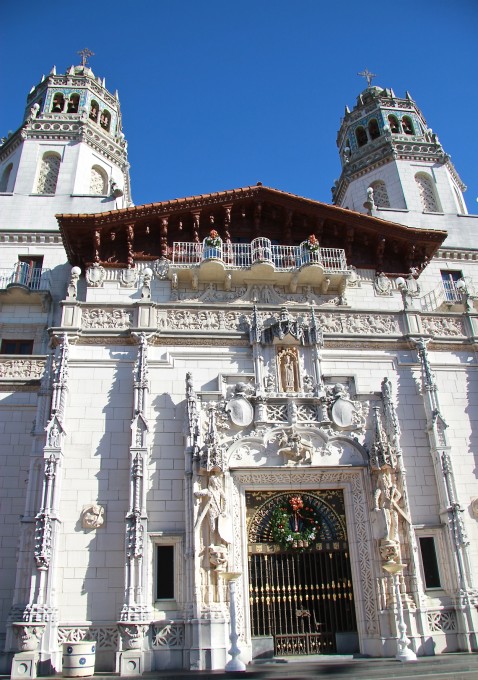
The visitor center and tour guides have so much information available, there’s no way to take it all in in just a day. Here are just a few of the facts I found fascinating about Hearst Castle.
- He was an avid art collector, and his passion was inspired when his mother took him to Europe for 18 months when he was a boy. His collection is worth millions today, one piece is worth $10 million just by itself.
- Much of his collection was acquired after WWI when European towns were selling off parts of buildings that were damaged in the war. He was the largest single collector outside of museums.
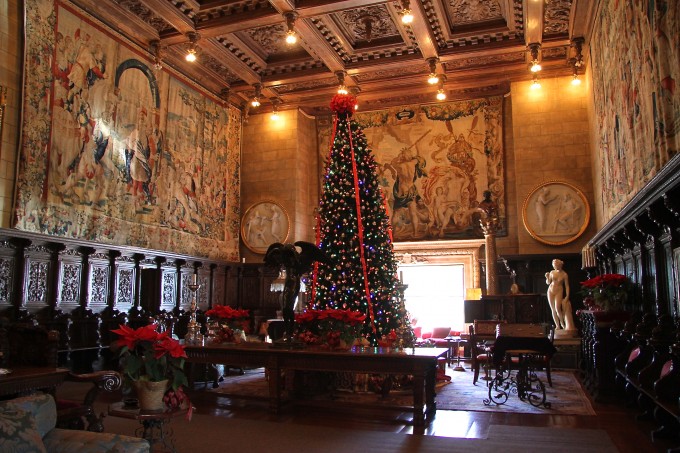
- He picked the spot on the hill to build the house because his dad used to bring him up there as a child on horseback, and it’s his favorite piece of the 250,000 acres he inherited.
- He hired Julia Morgan, one of the 1st women architects of her time, to design the house with him. They worked together for 28 years.
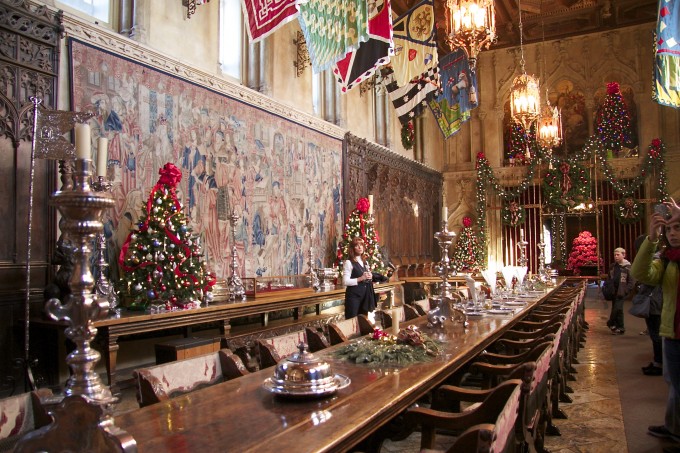
- The house was never completed. One part or another was always under construction. The house still remains unfinished today.
- He preferred the quiet life of the ranch over “ high society”, but he had his newspapers flown in everyday from L.A. He had an airstrip built, and it remains still today.
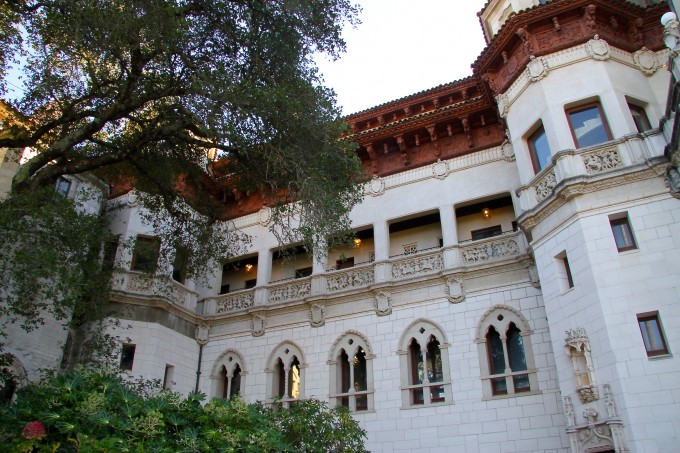
- The house cost around 10 million to build, which is surprisingly lower than it looks with all the details and original structures he had shipped over from other parts of the world, and how many times he had things torn down and redone.
- The Neptune pool was ripped out and redone 3 times. It now holds almost 350,000 gallons of water, and has real Grecian ruins surrounding the perimeter.
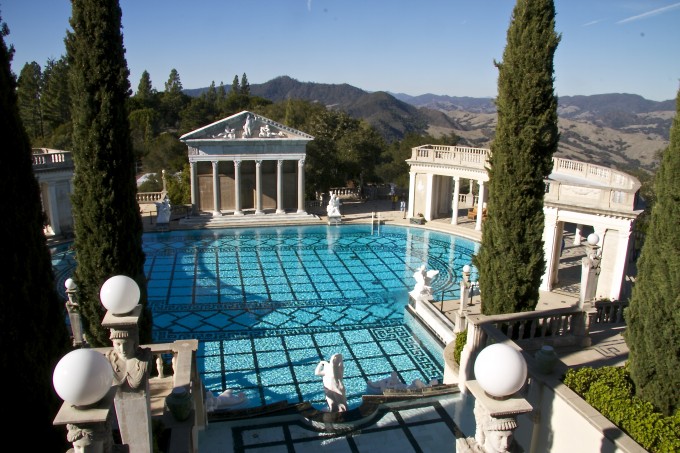
- There are 3 large guest houses on the property. He lived in one during the construction of the main house.
- He had 10 large homes all over the world, this wasn’t the biggest.
- The temperature can change up to 50’ from the coastline up to the top of the mountain. In the summer the coastal fog creates cool temperatures at the visitors center, but once you take the ride above the clouds to the main house on the hill, it’s hot and averages 20-30’ degrees warmer.
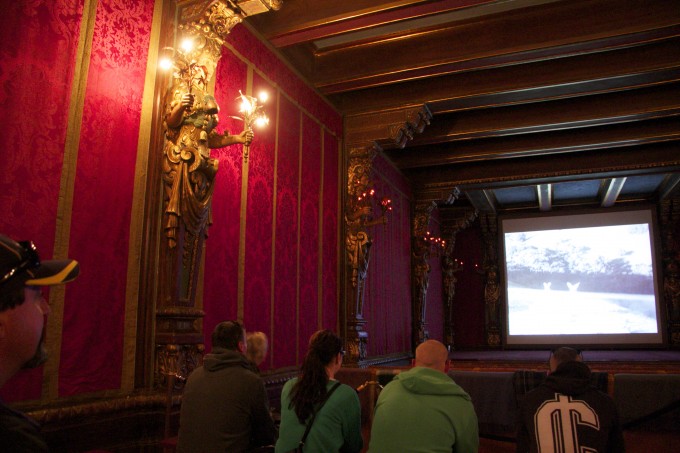
- The surrounding grounds are still a working ranch that the Hearst family owns. Although a big portion was donated to the state of California, it still remains one of the largest ranches today.
- The house was donated to the California State Park system in 1952. Hearst had moved out about 4 years prior due to ill health, and it remained empty for a number of years. Instead of selling off the estate in pieces, the family preserved it by working with the state of California park system.
- There was a zoo on the property. In fact, in it’s prime, it was the largest privately owned collection of animals in the country. The animals were sold off long ago, but the zebra were released on the land, and some of their descendants can still be seen mingling among the cattle on the ranch today.
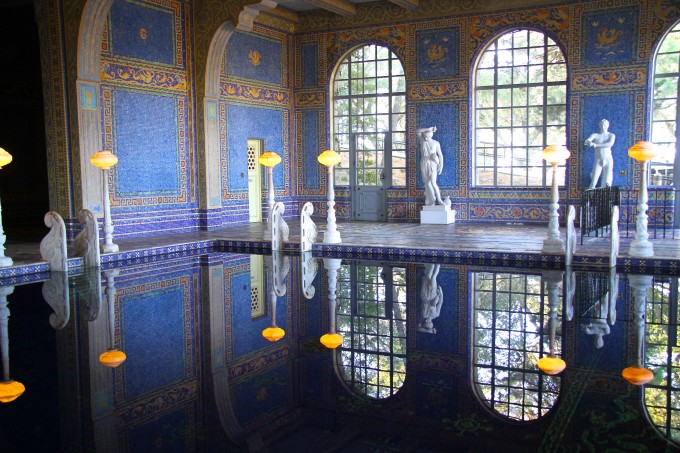
We only got to spend one day at the castle, and we could’ve easily spent a few more and still not get the full impact of Hearst’s legacy. However, I was very pleased at how much we learned in our short visit there. The visitor center has a very educational, entertaining IMAX movie about his life, which gave us a lot of context before we actually toured the house. The tour guide packed a lot of information into our 45 minute tour as well. As we toured the grounds, there are docents posted around the property, ready and willing to answer your questions and give you more detail into the history and legacy of the home and the man.
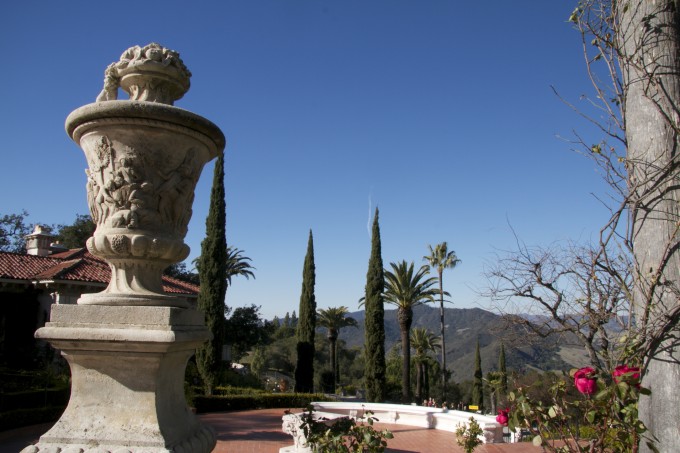
VISITOR TIPS:
1. Reserve your tickets in advance. Each tour is limited in the number of people that can go up the hill on the bus, and in peak seasons tickets might be sold out.
2. Go early in the day before the crowds swell and the weather gets hot.
3. The temperature can change dramatically, like I mentioned earlier, so dress in layers. Wear sunscreen and bring sunglasses or a hat as most of our time will be spent walking the grounds outside.
4. Bring your own food or snacks if possible. You can’t eat at the castle, but you can at the visitors center. They have some good food options there, but it’s pricey, like most tourist destinations.
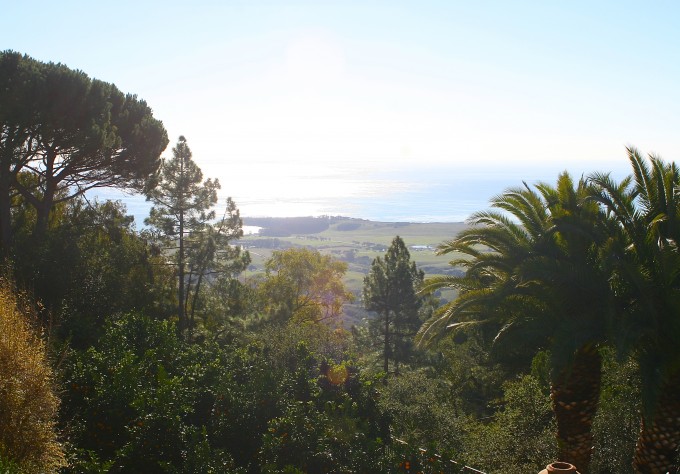
If you’d like to know more history on the Hearst Castle, you can check out the Facts & Stats page.
A tour of the castle is a great blend of education and entertainment, making it a perfect family destination.
So the next time you are in central California, make sure to put Hearst Castle on your list of places to visit.
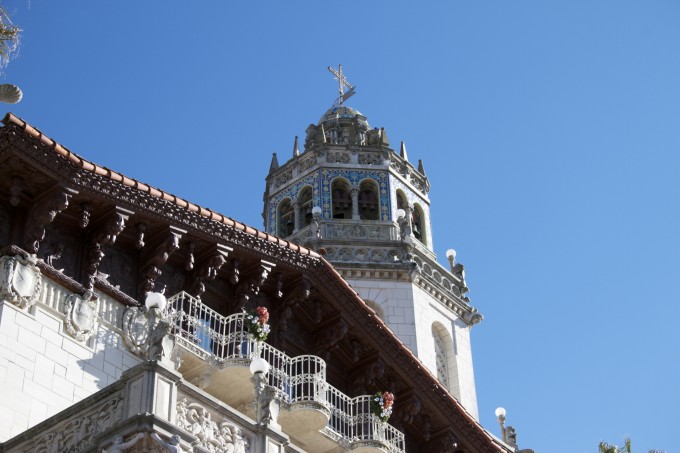
The Tao of Scissors & my pursuit of minimalism
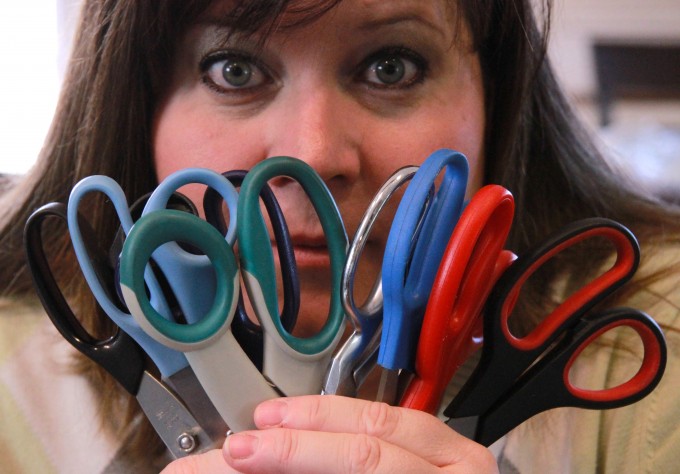
Part of my journey as a full time traveler is to streamline my life and master the art of minimalism. I want to eliminate the clutter and excess in my life and focusing only on the essentials. Over the past several months I’ve sold 90% of our possessions, moved into a TINY space (36 ft. RV) and am conscious about what I purchase or bring into my life. I thought I was doing such a good job. Until yesterday.
This is what happened yesterday
As you can see, there’s been improvement, and there’s still a long way to go. But I’m making progress, and that’s what matters.
What areas do you struggle with excess? What are your tips for overcoming it? I’d love some suggestions…
New Column on Everyday Family.com

Part of our alliance with Everyday Family TV included an invitation to write a blog column for their website. I’m excited to join a host of talented women, and add my voice and perspective on family life, travel, our trip, and anything else that inspires me. I’d love for you to join my journey. If you subscribe to our monthly newsletter I’ll include the links to these posts so you can stay updated on what’s happening at Watts in the World.
If you’d like to read my first post, you can check it out HERE.
Here’s a tidbit….
I turned 40 some months back, and hitting that milestone sparked a period of reflection for me that was headed in a bad direction. I began looking at my life’s accomplishments, and in some cases, lack thereof, and I started to spiral into a funk. It felt like such a cliché’, bemoaning my circumstances; the wrinkles & flabby body, my financial choices, the unfulfilled bucket list, etc. If I stayed there a moment longer, this might’ve turned into a post on plastic surgery or an expensive car purchase I’d just made.
Instead, I lay in bed one day and thought. I thought long and hard about what was most important to me. I asked myself a key question, “What one thing would I regret if I didn’t do it?” You probably have that one dream you’ve always wanted to make happen, right? Yeah, me too. And once I was clear about that, I had to then answer, “What was I willing to give up in order to get that one thing?” This, my friends, is how our long term journey across the country in an RV was born.
What’s new at the Denver Zoo
With 3 kids who love animals, we’ve spent more time at zoos in the past decade than most people spend in their lifetime. Currently our oldest daughter is even a docent- volunteer at our local zoo in Utah. So when we got the chance to visit the Denver Zoo, we couldn’t pass it up. Yes, most zoos house just about the same varieties of animals, but we soon discovered Denver has some unique elements that are pushing the boundaries and setting new standards for zoos across the nation. Stimulating, naturalistic environments and eco-friendly operations are just a few of the advances the Denver Zoo is committed to mastering this year. This level of dedication isn’t new to the zoo, in fact, it began over a 100 yrs. ago when the zoo was initially created.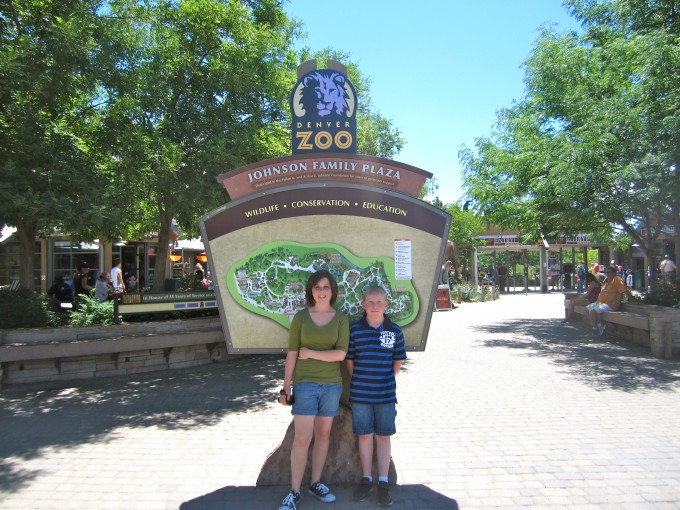
It all began with a special gift to the mayor of Denver back in 1896, a black bear, named Billy Bryan. That was the humble beginnings of what is today one of the most popular zoos in the United States, the Denver Zoo.
What makes this 80-acre facility located in the center of City Park of Denver so unique is the how cutting edge and forward thinking it’s been since its inception. It was the first American zoo to use naturalistic habitats, that was over 100 years ago. Now, it’s utilizing trash and animal waste to power portions of the zoo and create one of the greenest zoo environments in the world. This zoo has consistently been a trailblazer in advancing education and advocacy for animals, and it was a pleasure to see it up close during our visit.
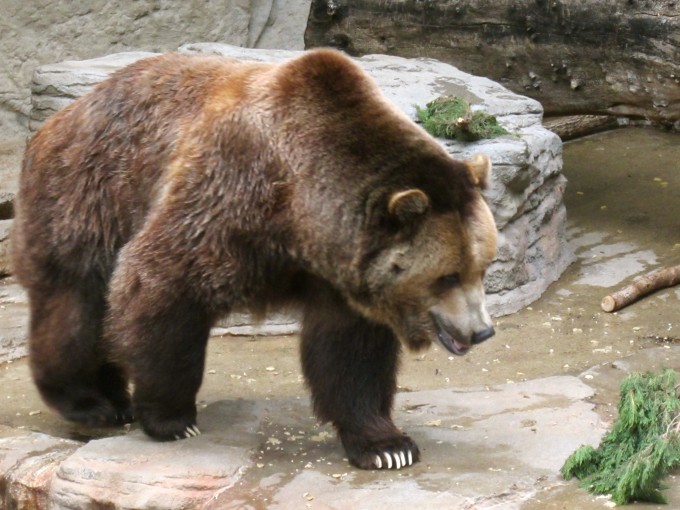
Did you know that when you visit the bear exhibit you are seeing a national historic landmark?
Bear Mountain made history by becoming the first naturalistic habitat of its kind in North America. Its construction was based on giant plaster casts of rock outcroppings from an area near Morrison, Colorado, and was designed to simulate the animals’ natural habitat. It was built over 100 years ago, and still houses animals today.
The award winning Predators Ridge
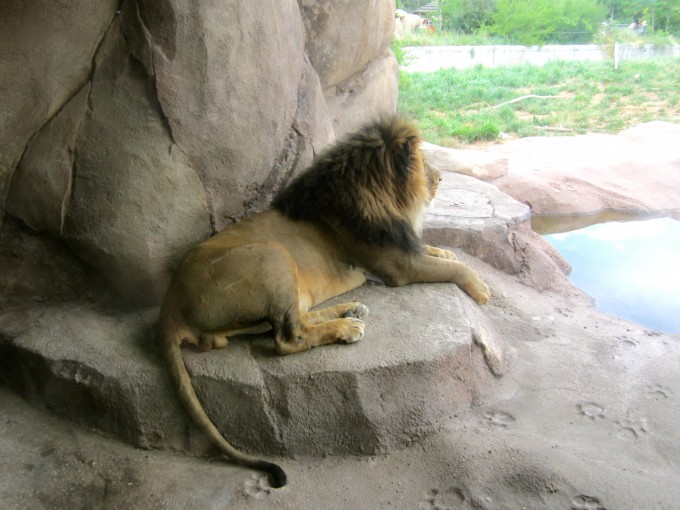
Another example of advances the Denver Zoo is making in the zoo industry is Predator Ridge. Predators Ridge is an example of what accredited zoos nationwide are trying to achieve – larger, more naturalistic and educational exhibits. This exhibit features 10-foot tall mounds for lions to survey their surroundings, electric hot rocks for warmth and a separate maternity den for mothers and future cubs to enjoy. Other native animals like hyenas are rotated through the enclosure to give the lions a more enriching environment. Because of it’s realistic nature this exhibit received awards from the AZA, and remains one of the highlights not to be missed when you visit.
The brand new Toyota Elephant Passage
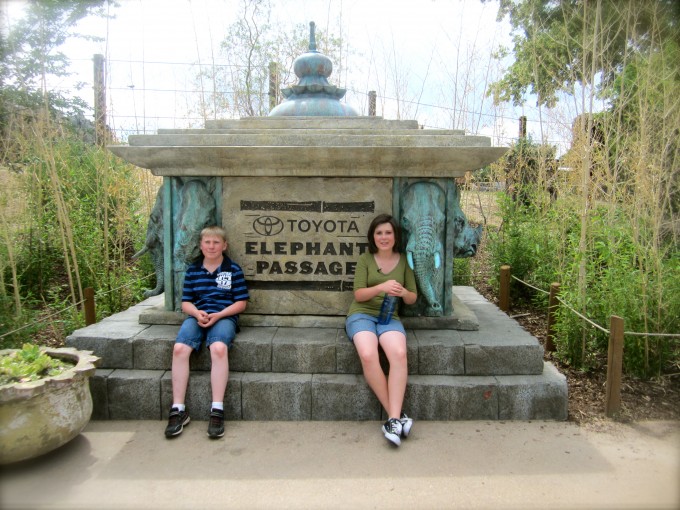
By far, the biggest and most impressive exhibit is the new Toyota Elephant Passage that opened June 2012. It houses 3 elephants and many other Asian species on the 10 acre property. It’s set up in a manner that allows the elephants to rotate through 3 different spaces, giving them a change of scenery and stimulation and freedom to roam that is unprecedented.
Besides the positive impact this new exhibit has on the animals, it’s having a positive effect on the environment as well. The new Toyota Elephant Passage turns human trash and animal waste into energy. The innovative gasification system will convert more than 90 percent of the zoo’s waste into usable energy to power the exhibit, eliminating 1.5 million pounds of trash currently going to landfills annually. Hopefully their example of how to create the best possible environment for the elephants, and save energy doing it will be an example other zoos will follow.
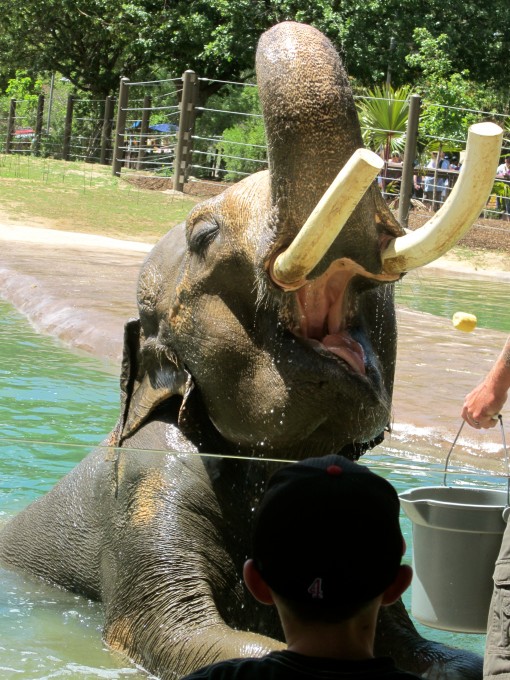
Quick Tips for your visit:
- Go early- The animals are usually more active in the early morning and early evening, so if you want to see them moving around, get there as soon as it opens.
- Map out the live shows first- Some of the animal shows, feedings or live demonstrations are held only once per day, so arrange a plan that ensures you get to see them, and fill in the time between shows with exhibits that are open all day long.
- Feeding Lorikeets- If you’d like to experience the fun of feeding lorikeets from your hand, and have them land on various parts of your body, do this early in the day. They are hungry in the morning, but after eating from the hands of numerous visitors, they are full by the afternoon. My kids loved this when they were little, and it makes for a great photo opportunity as well.
- Stay cool & hydrated- While there are some shady areas to rest and eat a picnic lunch, the majority of the paths are not shaded. Likewise, the sea lion show is in direct sunlight, and there’s no seating- you stand while watching it. Be prepared with hats, sunglasses, perhaps even an umbrella if you are senstive to the sun. Water bottles are $2.50 a piece in the zoo, and you’ll probably need to drink several during the day so plan that into your budget, or bring your own water bottles and refill them as needed.
- Be kind to your feet- As in most zoos, there’s several hills to walk throughout the zoo, and it’s a fairly big distance from one side of the park to the other. Be kind to your feet and wear proper walking shoes. It pains me to see women walking from one exhibit to the next, clearly uncomfortable in their high heels. Forgo making a fashion statement and enjoy your time with the animals.
- Take advantage of the Education available- The zoo’s website has an abundant amount of information available to prepare you for your trip. There’s guides to animal conservation, educational programs for teachers and students, and a teen program for those interested in more in depth knowledge of animals.
So as you can see, if you are in the Denver area, the Zoo is worth the day trip to explore it. It has a lot to offer both young and old, animal lover and environmentalist alike.
Have you been to the Denver Zoo? What was your experience like? What’s your favorite animal exhibit? Leave your thoughts in the comments below~ we’d love to hear from you!
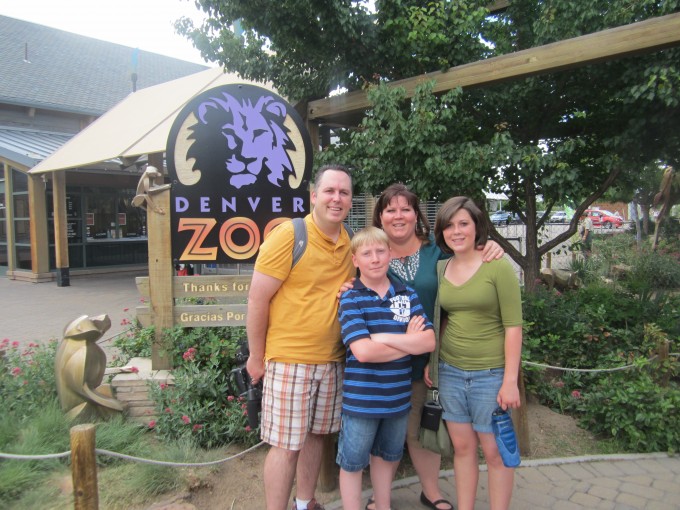
We are grateful to the Denver Zoo staff for their hospitality, and to Visit Denver for arranging the opportunity.
Water World: How to Beat the Heat in Denver, Colorado
Our family LOVES water parks! Since Water World was named one of the Top 10 Water Parks by the Travel Channel, we were anxious to experience it. A few weeks ago we were in Denver, Colorado for the Travel Bloggers Exchange conference, and we jumped at the chance to check it out. Having the opportunity to cool off at one of America’s largest family water parks, just as summer is starting to heat up, was perfect. With over 64 attractions and slides to choose from, we knew we were in for a day of fun.
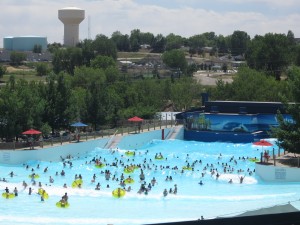
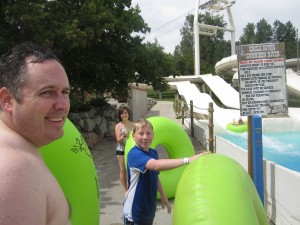
There is a great section for small children in the Wally World and Big Top play areas that I would’ve loved when my kids were little. Since they are teens now, we headed straight over the thrill rides. Dino enjoyed racing Hannah and Hayden down the Turbo Racer, and being swished around like a toilet bowl in the Spacebowl. The Skyline Speed Slide is probably the biggest thrill, a 6 story plunge straight down. You can see the slide in the background here.
The newest thrill ride, The Mile High Flyer, opened just this month. Unfortunately it wasn’t open yet when we visited, but it sure appears to be the most cutting edge water ride to date. It’s the first hydromagnetic water coaster in the Rockies, which means the ride can ascend, not just descend with gravity, like regular water rides. I am excited to go back and try this one out!
I think Dino ad Hayden’s favorite attraction was Riding the Wave. It’s a wave simulator that you try to ride on a boogie board. It looks easier than it is, and rarely could a person stay on for more than a few seconds. The boys attempted at least a dozen times, and had some spectacular wipe outs each time. Ladies, be careful, many bathing suit pieces came off or down during a wipe out.
Sore and cold, but not defeated, Hayden decided to take a break and move on to the lazy river for a little bit.
Other highlights: The Wave Pool is usually a family favorite, along with the Lazy River. I could spend the whole day just floating in a tube and staying cool.
A unique ride I’ve never seen before was the Zoomerang. It looks like a skateboard pipeline with a trickle of water flowing down the surface to create a hyrdoplane experience as your tube sails back and forth. Now that’s an intense thrill.
There are many positive features about Water World, but here are some of my top picks.
Features worth mentioning:
- Free, Tasty Water- The water fountains are equipped with filtered water that you can refill your own water bottles with, which eliminates the expense and waste created by buying bottled water.
- Parking is free. While many parks and events charge enormous fees for parking, you are spared the extra expense at Water World.
- Bring your own food. Picnics are welcome, so you are not held hostage to buying snacks, beverages and lunch inside the park. However, if you do eat at one of the food stands, the prices seemed within reason of what you’d pay at an amusement park. There are shaded picnic pavilions where you can eat your lunch
- The All-You-Can-Eat buffet and soda fountain option that starts at $11.99 for kids, and $13.99 for adults. If you plan on being there for a full day this would most likely pay for itself.
- Tube Rentals- During the busy season renting a personal tube is a timesaving option. It’s $5 for 1 or $8 for 2. There’s also a Valet service available to take your family tube (seats 4) to the top of the ride so you don’t have to carry it yourself. It’s $30 for the day. We didn’t use it, but worth looking into depending on your circumstances. If it’s not busy, personal tune rentals aren’t worth the extra expense, you can obtain them easily from the patrons exiting the ride.
- Cabana rentals- If your budget allows, another option would be a private cabana with free wi-fi and a cooler or refrigerator for your drinks. Sounds like a heavenly way to stay out of the sun and recoup between thrill rides.
Overall, the rides proved thrilling, the staff was friendly and helpful, and the facility and pools were clean. There was a great blend of families, and teen groups, and I felt safe and relaxed enough to let my kids wander around on their own for awhile. It’s open between Memorial and Labor Day, and if I lived closer, it would be worth getting a season pass for my kids to come with their friends.
I would recommend anyone wanting to beat the heat in Colorado to visit Water World in Denver and try out one of the best water parks in America!
For more information about Water World, go to: www.WaterWorldColorado.com
Disclosure: We were not paid for this review, however we were given free admission as part of Visit Denver’s promotion of the TBEX conference. The opinions expressed are our own, and not influenced by the park or it’s affiliates.
Watt Family Top Travel Adventures- Part 1: Moab Utah
Moab Utah- August 2011
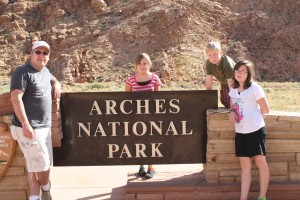
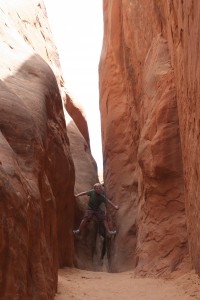 In an effort to document our travels both before the trip, and during it, I’m going to be sharing a series of posts based on our family travels so far, and in no particular order.
In an effort to document our travels both before the trip, and during it, I’m going to be sharing a series of posts based on our family travels so far, and in no particular order.
Also, I’m testing out a new way to make short videos. {Click on the link and let me know what you think!}
Summer break is in full swing starting this week, and I’m sure many of you are thinking about ways to spend your time. I’m scouring the internet myself, looking for adventures that we would like to take.
I have a suggestion for you: Do you want to do something really fun, family friendly, educational and involves being out in nature?
Go to Moab!
The Arches National Park, Zions National Park and Canyonland are some of the most awe-inspiring places I’ve been.
The red rocks, the unique arch formations, winding canyons and warm weather made this a great weekend for us.
Dino is not a hug lover of camping, hiking, and all things outdoors, so he usually complies out of his abiding love for me and the kids. He’s such a good sport, and has earned many brownie points over the years!
Disclaimer: August is probably not the best month to go. The Utah desert gets very hot, and we had to limit our hiking to the early morning and evening times to avoid full blown melt down from the kids.
The sunsets are a-maz-ing, and if you’re even remotely good with a camera, you’ll get some beautiful photos of some of the prettiest landscape in the U.S.
Note to self: Don’t try to take photos of tired cranky kids in the few minutes you are waiting for the sun to set, or you’ll get caught up in bribing them to smile and miss the sunset entirely!
One way to chose to cool off in from the scorching weather was to go on a 1/2 day river rafting trip. I had been when I was a teenager, but the kids never had. They loved it! Fortunately they are all good swimmers, love the water, and weren’t afraid of the rapids.
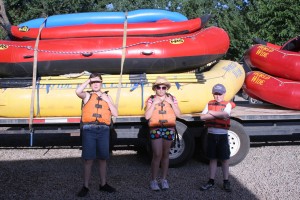
Another tip: If you want higher rapids and a more advanced course, go earlier in the summer or late spring. The water is colder, but the rapids are bigger and faster because of the spring snow melt off.
In August the rapids were lower and slower, but the water was warm enough that the kids could jump out and swim/float along with the boats in between the rapids.
If you have young ones, or are nervous in water, go later in the season.
One of the best parts of traveling is watching my kids make friends and adapt quickly in just about any situation.
It was a proud mama moment- watching my kids be outgoing, social, and take the initiative to solve their own problems.
That’s what I love about traveling- exposing my kids to new people, new experiences, and opportunities to grow and stretch themselves.
For me as a mother, this was the peek of what’s ahead. The beginning of my girls becoming women- independent, strong, courageous ladies who will go out and take on the world. And win.
Episode #1- Vegas, baby
In a moment of serendipity, Dino and I were invited to speak at a multi-level marketing conference in Vegas during the week of my kid’s spring break.
We headed down to Las Vegas, with kids in tow, to start documenting our travels over the weekend.
We wanted them to get used to being in front of a camera, and seeing our travels through a new lens.
We’ve cut together a first draft of our inaugural episode.
You can watch it HERE.
Enjoy!
And as always, if you like our content, please feel free to share it with your friends and networks.
Health & Happiness,
Dino & Shannon
JAMAICA- Where the seeds were planted
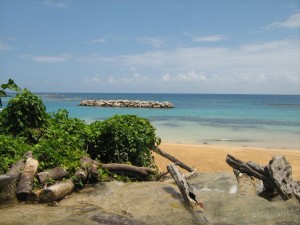
This is where it all began. Back in May of 2008, exactly 4 years ago this week, we embarked on our first international vacation as a family. With freshly minted passports in hand, and a single carry on suitcase, the kids were bursting at the seams to head off on our family adventure in Jamaica. They were terrific travelers, and handled the long flight, long bus ride, and customs check in with ease. I was surprised and relieved that my kids were so adaptable and forgiving of all the bumps in the road that can happen while traveling.
We did the typical tourist route, we stayed in an all-inclusive Beaches resort in Ocho Rios for a week.
The girls go their hair braided.
We spent hours upon hours at the beach, or at the pool. It was heaven.
We were spending intense quality time together as a family, and we weren’t getting sick of each other. Of course the environment we were in helped, but there was something magical about learning, playing, exploring new adventures together that made my heart sing.
We were having a lovely time riding banana boats, kayaking, and snorkeling daily. My kids didn’t spend much time with the other vacationers, they gravitated towards the staff & the locals. They were curious of the culture, the people, and what life was like outside of the resort.
We wanted to see more of Jamaica, but we weren’t brave enough yet to strike out on our own with little kids in a country we weren’t familiar with, so we opted for 2 off property expeditions. We wanted to go tubing down the river in the rain forest, which was in the middle of the island. As we were taken in vans about 2 hours inland, we got to see the “real” Jamaica. How the employees of the resort lived after they left their 9-5 job at the resort.
There were similarities to our life that my kids could identify with; children playing in the street, laughter, dogs barking, older men sitting on their porches watching the days activities. It was Sunday, and the sweet old ladies were dressed in their Sunday best, headed off to church. I will always remember they wore beautiful hats and white gloves, just like my mom did back in the 50′s. It felt like a flashback in time, to a generation I’d only seen in the movies. It was quaint, and I wanted to get out of the bus and go meet these people, and get to know them better. To spend a day in their life and see what we had in common, and what they could teach me.
And then their were aspects of Jamaica my kids weren’t expecting; like the poverty, and poorly dressed children in some parts of town. The half constructed homes of cinder block with no roofs on them that were occupied in spite of it. It was heartbreaking to them and they wanted to know why it was that way. Not knowing enough about the country to offer an intellectual response, I couldn’t give them an answer. I wanted to know more myself.
The sites and sounds and food and people we encountered that week were new, strange, delightful, and fun. It stirred a deep curiosity to see more, to do more for our global brother and sisters; both at home in America, and in other exotic places.
It was this experience that planted the seeds of more travel- more family experiences to uncover the beauty of this earth and its inhabitants.
When we came home we started planning a full time trip around the U.S. in an RV. We were already homeschooling, so education wouldn’t be a challenge. Dino was managing a large investment fund that would finance our travels. Everything seemed to be falling into place.
Then in the fall, the stock market crashed. Our investments were wiped out in the down turn of the economy.
Our travel dreams were squashed.
It took us a few years to rebuild our life, and during that time our dream lay dormant. The kids would often talk about Jamaica, and how they wished we could go back. Or at least travel somewhere new. The travel bug had bitten them as well, and they wanted to get out on the open road. Dino and I just couldn’t see how we’d make it happen. We’ve had a few trips since then, Bahamas, Cancun, Southern California, and other domestic jaunts, but none have quenched the thirst for long term exploration.
As we were building up our business, we met someone in our same field of work as a coach and author, and she was living our dream of full time RV life with her family. She gave us some tips of how we could do it as well. Immediately the spark was reignited. This time it wouldn’t be extinguished.
The more research I did, the more confidence I got. The resources available online are amazing. People are so generous with their information and support. We could see a path for making this lifestyle a reality.
Our dream became non-negotiable.
The seeds planted back in 2008 in Jamaica had sprouted in our minds, and the roots grew deep into our hearts.
We had to convert our dream into reality. And so our journey begins.
Do we have all the details narrowed down? No. Do we have all the funds secured? No. Does it feel extremely vulnerable to announce your cause-movement-advneture to the world without all the answers? Absolutely. And yet here we are. Unable to contain our passion, we are declaring our intention and come what may.
A lot has happened in our lives since May 2008, but one thing has remained a constant, when we align ourselves with our passion, God works out the details. We are in his hands from now until departure day.



